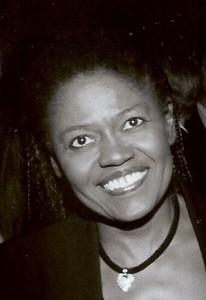Kirkus Review named “Hidden” a Best Book of 2013!
Norman Rockwell’s America was not all white. As early as 1936, Rockwell was portraying people of color with empathy and a dignity often denied them at the time. And he created these portraits from live models.
Hidden in Plain Sight: The Other People in Norman Rockwell’s America unfolds, for the first time, the stories of the Asian, African, and Native Americans who modeled for Norman Rockwell. These people of color, though often hidden in plain sight, are present throughout Rockwell’s more than 4000 illustrations. People like the John Lane family, Navajos poignantly depicted in the virtually unknown Norman Rockwell painting, “Glen Canyon Dam.” People like Isaac Crawford, a ten year old African-American Boy Scout who helped Norman Rockwell finally integrate the Boy Scout calendar.
In this engrossing and often humorous narrative, Jane Allen Petrick explores what motivated Norman Rockwell to slip people of color “into the picture” in the first place. And in so doing, she persuasively documents the famous illustrator’s deep commitment to and pointed portrayals of ethnic tolerance, portrayals that up to now have been, as Norman Rockwell biographer Laura Claridge so clearly put it, “bizarrely neglected”.
Hidden in Plain Sight: The Other People in Norman Rockwell’s America is an eye opener for everyone who loves Norman Rockwell, everyone who hates Norman Rockwell and for all those people in between who never thought much about Norman Rockwell because they believed Norman Rockwell never thought much about them. This book will expand the way you think about Norman Rockwell. And it will deepen the way you think about Norman Rockwell’s America.
View the Trailer:
Jane Allen Petrick is the author of several books on topics ranging from biography to workplace issues. She was a bi-weekly columnist for the Knight Ridder Newswire, and her articles have appeared in numerous publications including theNew York Times, the Denver Post and theWashington Post. Kirkus Review describes her book, Hidden in Plain Sight: The Other People in Norman Rockwell’s America as “smart, nuanced” and written with “clarity and insight.”
Born and raised in Connecticut, Jane earned a BA in economics from Barnard College and received her Ph.D. in organizational psychology from Saybrook University. Retired as a vice-president of ATT Wireless, she is now an adjunct professor at Capella and American Sentinel Universities, and has provided consultation in organizational behavior and diversity competence to numerous corporate clients including IBM, Nextel and Xerox.
Jane Allen Petrick was chosen as one of the “100 Best and Brightest Business Women in America” by Ebony Magazine.
Long a passionate supporter of cultural and historic preservation, Jane has contributed to local preservation efforts in both Florida and New York State. A licensed tour director, Jane conducts cultural heritage tours on the East Coast, from the Everglades to the Maritimes.
Jane and her husband, Kalle, divide their time between New York’s Hudson Valley and Miami, Florida.
Buy Hidden in Plain Sight:
Interview With Deal Sharing Aunt: February 24th, 2013
1. Do you like to listen to music while you write,
if so what songs?
I wish I could! I have music playing
throughout the house when I am not writing: classical (Bach, Rachmaninoff ,
Foure) , modern jazz (Chet Baker, Monk, Pat Methany) and traditional style
Christian hymns and songs (for example, "Watch and Pray")
2. What is the best place you have ever visited. Is
that where your books take place?
That's a tough one. My favorite places
are the Tarragona region of Spain, Calaveras County in California, the tiny
French speaking island of Guadeloupe, the even tinier Prince Edward Island in
Canada. I guess I am a lover of islands and mountains. I am blest to live in my
absolutely favorite place, the Catskill Mountains Preserve, bordering the
Hudson River Valley.
3. What is your favorite invention?
The light bulb. I can read and write
so much longer!
4. What is the most important thing about writing?
Having a good, strict editor who makes
you change it.
5. What would you like my readers to know?
That I
appreciate them. Without serious, critical readers we shall lose our serious,
critical writers. And without serious, critical writers, democracy is in
trouble. Our second president John Adams said that in order for democracy to
survive every citizen must read, think, write and speak. I would simply humbly
add: in that order.


.jpg)
Thanks for taking part in the tour and hosting Jane!
ReplyDelete